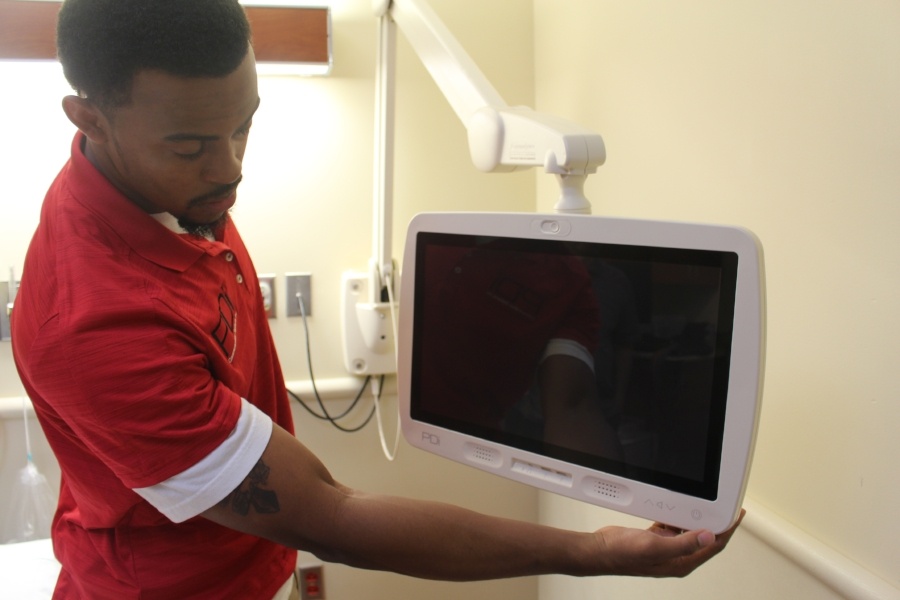Enhancing Care Delivery: The Trend of Virtual Nursing
The ongoing nursing shortage, intensified by the challenges brought on by the pandemic, has pushed healthcare facilities to explore innovative...
3 min read
Kayleigh DeLaet
:
February 2, 2023

Still reeling from the aftermath of the Covid-19 pandemic, and struggling to manage a surge of patients due to an aging population, US hospitals are facing a major crisis.
With demand for healthcare services the highest it’s ever been and climbing at an alarming rate, the country is anticipating a severe nursing shortage now through 2030, with the West being hit hardest.
Keep reading to discover what’s causing the shortage, how it will impact patient care, and solutions to alleviate the strain in your hospital.
Increased Demand for Nurses
Possibly the greatest factor contributing to the nursing shortage is an increased demand to provide care to an aging generation. The U.S. Census Bureau reports that by 2030, all baby boomers will be age 65 or older.
This will be the largest generation of patients nurses have ever treated—comprised of nearly 76.4 million people. To put this in perspective, the previous generation had a population of 29 million—nearly 2.5x less.
The surplus in patients is putting more pressure on healthcare professionals, many of whom are already burned out, by increasing nurse-to-patient ratios.
Additionally, as life expectancy increases, so do chronic health conditions, meaning patients need more medical attention than ever before.
Older Nurses Nearing Retirement
Likewise, due to the aging generation, a decline in nurse staffing levels is rattling the healthcare industry. Hospitals have seen unprecedented levels of nurses retiring, and this number will only intensify over the next few years. Currently, it’s estimated that 1 million RN positions will become available by 2030, with nearly 195,000 annual vacancies.
Accelerated retirements will also impact the quality of patient care. The loss of experienced nurses will reduce the wealth of knowledge hospitals have accumulated over the years and present more risk to patients as younger, inexperienced nurses take their place.
Fewer Nurse Educators
Another component contributing to the nursing shortage is the decline in nurse educators. In 2021, U.S. nursing schools turned away 91,938 qualified applicants due to a lack of faculty and resources.
The lack of faculty can be attributed to two factors. The first is that master's and doctoral nursing programs aren’t producing graduates at a large enough capacity. In 2022, enrollment in both programs dropped by a shocking 13%.
The second factor is the substantial pay difference between RNs and educators. According to the 2022 Nurse Salary Research Report, the median salary across advanced practice RN positions is $120,000; whereas the median salary for nurse educators holding master’s degrees is only $87,325.
When nurses work long shifts and have too many patients to treat, they become fatigued and are more likely to make medical errors. This presents numerous risks to patients.
According to the National Library of Medicine, insufficient nurse staffing levels result in higher patient safety incidents and elevated risks of morbidity and mortality. Additionally, in hospitals with high nurse-to-patient ratios, nurse burnout leads to increased failure-to-rescue rates.
The impact of low nurse staffing and nurse burnout on patient safety is so prevalent that some states, such as California, have mandated minimum staffing requirements to mitigate the outcomes.
Addressing the complexities of the nursing shortage lies largely in the hands of legislators and policymakers. As such, thirty-seven states have recently implemented Nurse Licensure Compact laws to provide health services to patients in underserved states.
Additionally, Kentucky has started issuing temporary work permits to graduates of international nursing schools, which could prove to be a viable option for other states.
While these policies are a step in the right direction, there’s still a lot that needs to be done to address the nursing shortage. Below are a few ways managers can alleviate the strain in their hospitals.
Leverage Technology
According to a 2013 study conducted by American Nurse Today and Voalte, nurses spend more than 53% of their time on tasks unrelated to patient care, citing communication as the largest interruption.
There are several patient engagement technology tools that can cut down on communication time, such as GENiO. GENiO is a cloud-based platform that can easily send alerts and messages to patients via their PDi Smart TVs or medTAB touchscreen patient TVs.
With its affordable pricing and ability to optimize clinical workflows, GENiO is a great option for improving nursing efficiency.
Prioritize Culture
Periods of change are a critical time to focus on connecting with employees and fostering a positive work environment. If employees don’t have strong relationships with fellow staff members, it can negatively impact job performance and retention.
One way to enhance workplace culture is to initiate one-on-ones with employees. Let employees use this time to talk openly about their concerns, and take action when possible. When employees feel heard, they will appreciate their work more.
Additionally, be sure to celebrate employee wins, even if they’re small. When employees know that their contributions are appreciated, they will feel a stronger sense of fulfillment and be motivated to continue doing great work.
Schedule Flexibility
A final suggestion for increasing job satisfaction among employees is to offer them schedule flexibility. Nurses’ shifts are inherently exhausting, as they’re required to be on their feet for twelve hours at a time. It makes sense that they would like time to recharge afterwards.
By giving nurses the freedom to create their own work schedules and organize their week as they see fit, they're more likely to be satisfied with their jobs.

The ongoing nursing shortage, intensified by the challenges brought on by the pandemic, has pushed healthcare facilities to explore innovative...

Satellite, Cable, IPTV, oh my! Where does one start to understand how to provide excellent TV options to entertain and inform patients who are in the...

Last updated Nov 11, 2025 Discover how virtual nursing care and remote sitters are revolutionizing healthcare amidst a global nursing shortage.